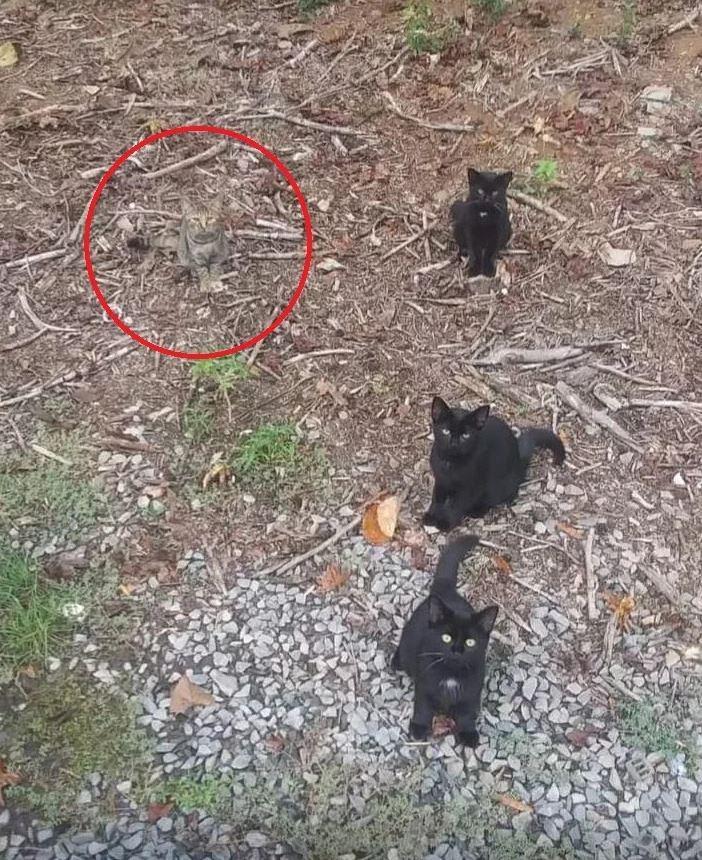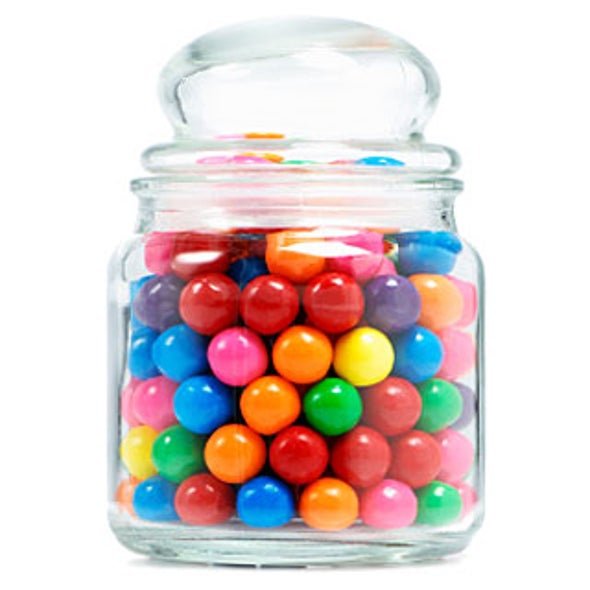
这张照片有4只猫 太会藏 让网友直呼:根本忍者
11/24/2021

有些动物为了适应大自然,都会发展出「保护色」隐藏自己,使得猎物没办法轻易分辨目标下手。最近有位网友分享照片,让人讶异就算是常见的宠物猫咪,居然都可能拥有自己的保护色。
根据日本媒体「grape」报导,最近有位外国网友,在「Reddit」论坛分享一张照片。画面一眼望过去,可以马上看到有三只黑猫排成一直线,然而这位网友却表示,其实在这张照片中,一共有四只猫咪存在。
原来第四只猫,就在后排那只黑猫的左边,然而因为他的毛色和四周围背景太过相似,形成天然的保护色,所以很难一眼望去就察觉到。甚至如果不提醒画面上有四只猫,可能会有许多人因此忽略掉。
网友们纷纷表示「我找了好久都没找到」、「完全看不到啊,保护色太完美了」、「这只猫是忍者吗」、「我还以为第四只也是黑猫拚命找」、「那只猫的名字可能叫『威利』」、「其实叫『约翰希南』」、「搞不好其实藏了20只,只是我们找不出来」、「你们都没发现第五只对吧」、「这是什么眼力测验吗」。


Tel: 551-580-4856 | Email: F.WINNIE.S@GMAIL.COM
诚招美国和加拿大法律服务代理
因公司发展需要,诚招美国和加拿大法律服务代理。
要求:
懂英语、或西班牙语、或法语。
能合法工作有社安号或工号。
无需改行, 可以兼职。
大学生和有销售经验优先考虑。
自雇生意公司发美国报税1099,加拿大T4A
有意了解详情, 请扫码加微信, 非诚勿扰!

Researchers have developed a new model that can estimate the number of objects randomly packed together
By Lynne Peeples on August 4, 2009

Counting cards at the casino may pay out more than counting candies in a jar, although a close goodie guesstimate could still win you a sweet prize at the county fair. But just how do you estimate a figure for all the candies you can’t see in the inner part of the jar, especially if they vary in size?
Researchers at New York University (N.Y.U.) may finally have the answer to this classic mathematical puzzle. Using transparent, fluorescently labeled oil droplets in water, the physicists looked beyond the outermost layer of spherical particles within the container—the only layer visible when looking from the outside—to spy on the geometric behavior inside. The resulting formula, which simply requires the sizes of the particles and the container as inputs, could make fair officials nervous.
“You give us the distribution of sizes, and we can tell you how it will pack,” says Jasna Brujic, who led the project.
Brujic and her colleagues at N.Y.U.’s Center for Soft Matter Research used their 3-D oil–water model to determine that bigger particles, when packed in a container holding a combination of sizes, made more contacts with neighbors than smaller ones. That much was intuitive, Brujic says, given their larger surface area. What was more surprising was that the average number of contacts for a particle within any mixed container was always six. This number, she explains, maintains mechanical stability.
The researchers also knew from previous work that randomly packed identical spheres fill up about 64 percent of the volume in a given container. But Brujic’s team was the first to describe how that proportion, or density, grows when the spheres vary in size; smaller ones can fill in voids that larger ones can’t.
So, what should a contestant do if he or she wants to guess at the number of candies in a jar, but lacks the complicated formula and a handy computer? “First, estimate the size of the jar,” instructs Brujic. “Then look to see if all the candies are the same size. If they are, take 64 percent of that volume and divide it by the size of the candy to get the total number that would randomly fit inside. If they aren’t equally sized, divide a slightly larger area, around 70 percent, by the average size of the candies.”
The team’s experiments were all based on spherical particles, so Brujic notes that corrections are needed when generalizing to other shapes. Counting jellybeans would be more complicated than gumballs, for example.
The applications for this finding extend well beyond the fairgrounds—ranging from aiding oil extraction to filling vending machines to creating a paint that dries faster or a pill that is easier to swallow. Brujic, however, returns to the candy model with her big business idea: “If you want to make the most money as a sweet-maker, you could tune the size distribution to get a small density,” Brujic says. Or, for the more generous candy-maker, the reverse could work: “If you are a Charlie and the Chocolate Factory manufacturer, you could find a way to fit the most chocolates in your bag.” She is considering asking confectioner Mars, Inc., for her next grant.
The study was published in the latest issue of the journal Nature. (Scientific American is part of the Nature Publishing Group.)

